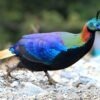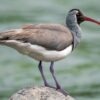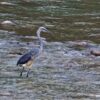Birding Across Bhutan
Description
Inclusion/ Exclusion
Package Cost Includes:
- Accommodation in standard room on twin sharing basis at hotels/ Lodge on full board basis.
- All hotel Tax & service charges.
- Bhutan visa processing and VISA Fee
- All inland travel permits.
- RGoB Royalties and taxes.
- All pick up, drop, transfers and sightseeing as per itinerary by private non air-conditioner car.
- Local sightseeing tour with entrance fees where applicable.
- Services of an English speaking local birding guide.
Package Cost Does Not Include:
- Items of personal nature like Porterage, Tips, Laundry and Mineral Water.
- International or Domestic flight.
- Travel & Medical insurance coverage.
- Drinks/ beverages during sightseeing / drives.
- Communication charges, laundry, tips, porters at hotels.
- All other items and services not mentioned above.
- Company will not be responsible for any loss / Damage of Baggage, Train / Flight Delay or Cancellations due to technical fault or Natural disasters, Road blockage, Strike, land slide, etc.
Itinerary
Day 01 – Arrive Delhi
Arrive Delhi by International flight. Meeting and assistance upon arrival and transfer to the hotel. Overnight at the hotel.
Day 02 – Delhi
Morning go on a birding tour with a guide at the Sultanpur National Park. The park is home to the Indian Courser. Sind Sparrow has now made its way down the canal from Sind and Brooks’s Leaf Warbler is a regular winter visitor, as well as many waterbirds including the impressive Black-necked Stork and Sarus Crane.
Later tour visit the Qutab Minar, Humayun’s Tomb drive along the ceremonial avenue – Rajpath, past the imposing India Gate, Parliament House and President’s Residence and end the tour with a drive through Diplomatic Enclave. Overnight at the hotel.
Day 03 – Delhi – Paro (By Flight)
Today early morning, transfer to the airport to board the flight for Paro. Arrive at Paro airport, the flight into Paro takes you over the great Himalayas, offering the scintillating scenery of the world’s highest glacial peaks. As you enter Paro valley, you will see the silvery Pa Chu (Paro River) meandering down the valley, the Paro Dzong (fortress) and Ta Dzong (watch tower).
Upon arrival check-in at the hotel and do birding around Paro. Birds we may encounter include Ibisbill, River Lapwing, Grey-backed Shrike, Oriental Turtle Dove, Rufous-breasted Accentor, Hodgson’s Redstart and perhaps Black-tailed Crake. Overnight at the hotel.
Day 04 – Paro – Thimphu
In the morning we will do birding at Chele La Pass. This is a good location for Himalayan Monal. Blood and Kalij Pheasant may be sighted here. Other possibilities include Yellow-billed Blue Magpie, Grey-crested & Rufous-fronted Tits, Black-faced Laughingthrush, Long-tailed Thrush, White-collared Blackbird, Collared Grosbeak, White-browed and Dark-rumped Rosefinch.
Later drive to Thimphu (approx. 55Kms / 01 hour) with birding stops along the way. There are a good many things to see in the capital which has a very relaxed, laid-back feel about it. Thimphu is relatively small having a population of approximately 90,000 people and the streets are wide and tree lined.
Upon arrival check-in at the hotel and visit the Late King’s Memorial Chorten, The building of this landmark was envisaged by the third king, His Majesty Jigme Dorji Wangchuck, as a monument to world peace and prosperity. Completed in 1974 after his untimely death, it is both a memorial to the Late King (“the Father of modern Bhutan”) and a monument to world peace. The paintings and statues inside the monument provide a deep insight into Buddhist philosophy. Later visit the National Library, the indigenous hospital specializing in herbal medicine, handmade paper factory, and the nunnery at Zilukha.
Thereafter, tour of the school of fine arts where young students learn the traditional arts and crafts (Zo Rig Chusum – the thirteen crafts); Zangtopelri Lhakhang, the Handicraft Emporium and the local handicraft centers to see the varieties of textiles, thangkha paintings, masks, jewellery etc. on display. Dinner and overnight stay at the hotel.
Day 05 – Thimphu – Punakha
After an early breakfast drive to Punakha (approx. 70Kms/ 03 hours). On the way, halt at the Dochula pass– 26kms away from Thimphu (3120m). From this pass, if the weather is clear, you will get the most spectacular view of the Entire Eastern Himalayan Mountain ranges. The mixed forests of hemlock, fir, oaks and rhododendron here are great habitat for many good species including Fire-tailed Myzornis, Rufous-gorgeted Flycatcher, Rufous-breasted Bush Robin, Black-eared Shrike Babblers, and Yellow-billed Blue Magpie, Grey-winged Blackbird, Spotted Nutcracker and Gold-billed Magpie. Later continue your drive to the Punakha valley and upon arrival, check into the hotel.
Thereafter, visit Punakha’s Punthang Dechen Phodrang (the name means palace of Great Bliss.) residence for the Je Khenpo, Bhutan’s spiritual leader and the entire central monk community. Standing on the tongue of land where two rivers, Phochu and Mochu, meet, Punakha Dzong has special significance in Bhutan history. Punakha Dzong is the place where Bhutan’s first king, Ugyen Wangchuk was crowned in 1907.
Late afternoon birding along the Pho Chu valley looking for one of the main target bird, White-bellied Heron. One of the rarest birds in the world with a population of less than 200 worldwide. Other birds we might see Common and Crested Kingfisher and Ibisbill. Overnight at the hotel.
Day 06 – Punakha – Tsirang
After an early breakfast drive to Tsirang (approx. 135Kms/ 05 hours). This drive will take you through some of the best least explored forests of the country. This section of the country was very recently open for the visitors. You’ll have lots of stop for the birding. Some of the key birds you might be able to see are Rufous-necked Hornbill, Great Hornbill and many more since this part has never been explored. Overnight at the camp.
Day 07 – Tsirang – Galephu
After an early breakfast, we will look for birds in the forest that have been never explore. The habitats here are good for some of the rare birds like Beautiful Nuthatch.
Later drive to Galephu (approx. 05 hours). We will see lots of low elevation specialties including Pied Falconet, Pin-tailed Green Pigeon, Sultan Tit, Black-backed Forktail, Red- headed Trogon, Black Eagle, House Sparrow (rare in Bhutan), Jungle Babbler, Grey-sided Laughingthrush and many more. Overnight at the hotel.
Day 08 – Galephu
Today we will spend whole day birding exploring low land forest around Gelephu. The forest here is remarkably rich and diverse. Here we may find the species like Pied Falconet, Jungle Babbler, Large Hawk Cuckoo, Pin-tailed Green Pigeon, Wreathed and Great Hornbill, Puff-throated Babbler, Indian Roller, most of the lowland birds you will not see on the trip.
In the afternoon as we start climbing from the foothill we might also find the species like Long-tailed Sibia, Mountain Imperial Pigeon, Orange-bellied Leafbird, Blue-winged Laughingthrush, Common Green Magpie, Silver eared Mesia, Indian Peafowl and many more. Overnight at the hotel.
Day 09 – Galephu – Zhemgang
After breakfast drive to Zhemgang (approx. 07 hours). Today you will experience lots of changes in the elevation. Starting from the 150m to the 2500m. Drive goes through some of the best forest in the country. Birds we might see are few species of Laughingthrushs, Tesias, couple of Wren Babbler, Parrotbills and many more. Overnight at the camp.
Day 10 – Zhemgang
Today we will explore the entire stretch of Shemgang – Tingtibe road. We drop in elevation as we head towards Tingtibe targeting the low elevation birds like, Great and Rufous-necked Hornbill, Green Pigeons Cutia, White-browed Shrike Babblers, Minlas, White-tailed Nuthatch, Chestnut-bellied Nuthatch, and whole host of cool Laughingthrushs such as Red-faced Liocichla, Rufous-chinned, Blue-winged and Grey-sided Laughingtrush. Our main target bird for the day will be Beautiful Nuthatch. Overnight at the camp.
Day 11 – Zhemgang – Trongsa
After breakfast drive to Trongsa (approx. 07 hours) and we will stop at the several-forested valleys on the way, to see birds like Rusty-cheeked Scimitar Babblers, White-browed Scimitar Babblers, Steak-breasted Scimitar Babblers, Grey-bellied Tesia, Crested Buntings, Long-tailed Shrikes, Prinias, Rufous Woodpeckers, Common Green Magpie, Rufous-bellied Eagle, Mountain Hawk Eagle, Common Kestrel and minivets. This is also our best chance to see the Golden Langur, Leaf monkey’s endemic to Bhutan. Overnight at the hotel.
Day 12 – Trongsa – Bumthang
Today we will start little early to the Yongtola pass (3500m), which is about 1 ½ hours’ drive from the hotel. Here, we should see the Hill Partridge, Chestnut-tailed Minla, Brown Parrotbill, Chestnut-crown Laughing Thrush, Black-faced Laughing Thrush, Darjeeling Woodpecker, and Gold-naped Finch.
Afternoon, visit Kurjey Monastery, the temple built over the cave where Guru Rimpoche left his body print in the 8th century. Also see Jambay Lhakhang, one of the two oldest monasteries in Bhutan, which dates back to the 7th century. Overnight at the hotel.
Day 13 – Bumthang – Sengor
This morning after breakfast, we will drive to drive Sengor (approx. 05 hours) via Shertang La (3418m) and then through the Ura valley (2800-2900m) and up Thrumsing La (3757m) and finally down to the Sengor campsite situated at an elevation of 3000m. Amongst other species we will hope to find Blood Pheasant, Satyr Tragopan, Fire-tailed Myzornis, Fire-tailed Sunbird and Great Parrotbill.
Later in the evening, we will be birding around Sengor looking for Satyr Tragopans. Sengor is known as a hotspot for Satyr Tragopans. Overnight at the hotel.
Day 14 – Sengor – Namling – Yongkola
After breakfast drive to Yongkala (approx. 04 hours) to Bhutan’s wet subtropical forest, which is one of the finest birding areas in the Himalayas. For the next day, we will be birding in the lush forested valley, searching for Short Wings, Bar-winged Wren Babblers, Black-headed Shrike Babblers, Ward’s Trogons, Slender-billed Scimitar Babblers, Yellow-rumped Honeyguides, Barbets, Golden Bush Robins, and Chestnut-breasted Partridges. Overnight at the camp.
Day 15 – Yongkola – Limithang Road – Yongkola
Today we will spend full day birding near the upper and lower Limithang road. This Yongkala-Limithang road is graded as one of the best birding sites in the world. In this area, we may see following birds like Wedge-billed Wren Babblers, Rufous-throated Wren Babblers, Spotted Wren Babblers, Rufous-necked Hornbills, Coral-billed Scimitar Babblers, Slender-billed Scimitar Babblers, flocks of Parrotbills, Golden-breasted Fulvettas, Scarlet Finches, and many more. Overnight at the camp.
Day 16 – Yongkola – Trongsa
Today after early breakfast, drive back to Trongsa passing though the Sengor, after crossing one of the high passes, the Thrumshing La, at 3800m. Thrumshing La is the prime habitat for Blood Pheasant and also holds other high altitude species such as Snow Pigeon, Orange-flanked Bush-Robin, Spotted Nutcracker, Red-billed Chough, Fire-tailed Sunbird, Great Parrotbill, Stripe-throated Yuhina, Grey-crested and Coal Tits and White-browed Fulvetta.
We continue through the valley of Bumthang, one of the most beautiful valleys in Bhutan. After crossing the Bumthang valley it is another 03hours drive to Trongsa crossing the Yotongla pass (3400m). Upon arrival, check into the hotel for overnight stay.
Day 17 – Trongsa – Paro
Today after early breakfast we will go on a long drive to Paro (approx. 08hours). Upon arrival check-in at the hotel and relax amidst the comforts of your room.
Evening walk along the street and here you will see many interesting places. Overnight at the hotel.
Day 18 – Depart Paro
Today after breakfast you will be transfer to Paro airport to connect your flight for onward destination.
















Reviews
There are no reviews yet.